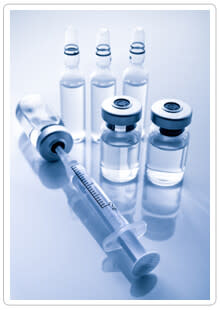
As a veterinarian in general practice, I’m occasionally asked to administer only half the recommended dose of a vaccine. As in…
“My breeder says Cookie is too small for a regular-sized vaccine and that she should receive only half of what other dogs get.”
Whether it’s Dr. Breeder, Dr. Mother-in-law, or Dr. Google who informs the request, the veterinarian’s answer is typically the same: “A full dose has been proven safe and effective. But we have no idea whether a half-dose is effective at all.”
Despite our staunch veterinary position, the debate rages on. Here’s why:
Vaccines, unlike almost all veterinary pharmaceuticals, are prescribed on a one-dose-fits-all basis –– not by body weight like drugs are. So it is that all dogs –– whether we’re talking about a two-pound Terrier or two hundred-pound Mastiff –– get the same volume of vaccine (usually one cc).
Trouble is, vaccine manufacturers only need to prove their vaccine is safe and effective in the species for which the vaccine is intended. They aren’t required to prove it’s as safe and effective in Great Danes as it is in Dachshunds.
Consequently, most canine vaccines are tested on "average" dogs –– not the tiny toys. And while pre-licensing clinical trials typically investigate the safety of vaccines with doses in excess of label directions, they do so only in a limited number of dogs.
Which perhaps explains why a greater percentage of small dogs suffer vaccine reactions. Here’s a bullet-point list of findings from a huge and oft-cited 2005 retrospective study evaluating 3.5 million vaccine doses administered to 1.2 million dogs:
“The risk of a vaccine-associated adverse event was inversely related to a dog’s weight." In other words, smaller dogs experienced more untoward effects of vaccination.
Pre-licensing clinical trials investigate the safety of vaccines in a wide variety of dogs but specific breeds may be under- or over-represented.
Ultimately, only 38.2 adverse vaccine reactions were observed for every 10,000 dogs.
So how do these findings inform my own vaccine recommendations? Here are my own personal conclusions:
Overall, this study supports my personal observation that the rate of adverse vaccine events is low and that vaccines, in general, are safe as currently administered in domestic pets.
That doesn’t mean they don’t pose a significant risk. I will still seek to minimize my vaccine rate in each pet by vaccinating only at-risk patients for non-core vaccines and implementing vaccine titer testing whenever it might serve as a reasonable substitute.
While I do firmly believe that a half dose is likely to be less adverse vaccine event-inducing when administered to any dog, I can’t be sure that a half-dose will be effective in every dog. It’s simply not been investigated and I’m not very comfortable doing it.
While vaccine manufacturers haven’t necessarily studied the safety of their vaccines in every size of dog, the sheer numbers of vaccinated dogs included in this study (and others like it) should serve as a powerful basis on which to assume safety in a wide variety of dogs at the recommended dosage. And finally…
While a half-dose might be safer, do we know that it’s truly safer? Until we know for sure that any given vaccine is effective at a half dose, for all we know administering half a dose might well come with all the risks of a vaccine … without any of its benefits.
Do you want your dog to be the guinea pig? As the proud owner of four dogs (three under twenty pounds and one less than ten), I’m not willing to try my luck. Are you?